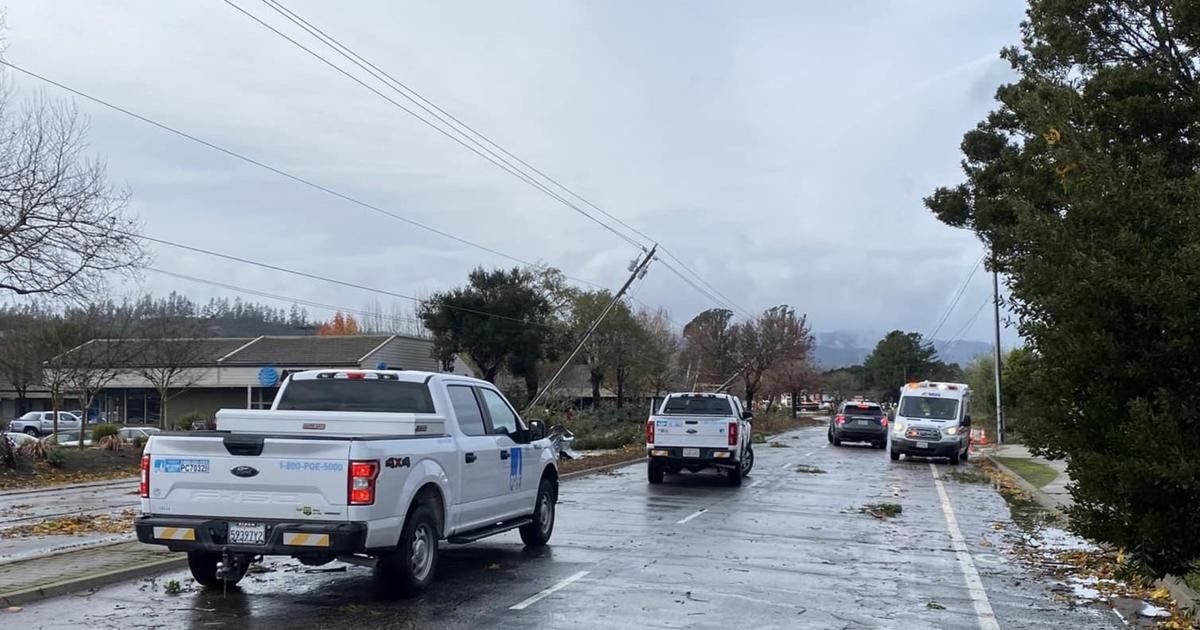Devastating Tornado Strikes Northern California: A Community in Shock
A rare and powerful tornado struck Northern California, particularly impacting the Santa Cruz area, on [insert date]. This unprecedented weather event has left residents in shock, with reports of flipped vehicles, damaged homes, and disrupted lives. Tornadoes are typically associated with the central United States, making this occurrence in California not only surprising but also a cause for concern among meteorologists and residents alike.
The Impact of the Tornado
The tornado, which developed rapidly and caught many off guard, caused significant destruction across Santa Cruz. Eyewitnesses described harrowing scenes as the tornado touched down, swirling debris and uprooting trees. Reports indicate that:
- Numerous cars were flipped over, blocking roads and causing traffic chaos.
- Homes sustained damage, with roofs torn off and windows shattered.
- Power outages were widespread, leaving thousands without electricity.
Local emergency services have been working tirelessly to assess the damage and assist affected residents. The Santa Cruz Fire Department reported multiple calls for assistance, including rescues from damaged structures and the clearing of debris from roadways. As the community grapples with the aftermath, many residents have expressed feelings of disbelief.
Understanding Tornadoes in California
While tornadoes are more commonly associated with states in the Midwest, California is not entirely immune to these destructive forces of nature. The state’s unique geography and climate can sometimes create the right conditions for tornado formation, although the frequency and intensity are significantly lower than in regions like Tornado Alley.
Conditions Favoring Tornado Formation
Several factors contribute to tornado development, including:
- Temperature Inversions: These occur when a layer of warm air traps cooler air below it, creating instability.
- Moisture Levels: High humidity can lead to storm development.
- Wind Shear: Changes in wind speed and direction with height can encourage rotation within storm systems.
The recent tornado in Santa Cruz likely resulted from a combination of these factors, exacerbated by unusual weather patterns. Meteorologists have pointed out that climate change may be influencing weather extremes, leading to more irregular occurrences of severe weather across the country, including California.
Emergency Response and Recovery Efforts
In the wake of the tornado, local authorities have activated emergency response protocols. The Federal Emergency Management Agency (FEMA) has been alerted, and resources are being mobilized to assist in recovery efforts. Key actions being taken include:
- Damage Assessment: Emergency teams are conducting thorough assessments to determine the full extent of the damage.
- Community Support: Local shelters have been opened to provide refuge for those displaced.
- Restoration of Services: Utility companies are working to restore power and clear fallen trees from roadways.
Community organizations are also stepping up to support residents, providing food, water, and other essential supplies as people begin to navigate the recovery process. Local churches and non-profits have organized donation drives to assist those in need.
Broader Implications: Climate Change and Weather Extremes
The occurrence of a tornado in California raises important questions about the implications of climate change on weather patterns. Research has shown that as the planet warms, weather extremes are becoming more frequent and severe. This includes not just tornadoes but also intense storms, wildfires, and droughts, which have all been observed in California over recent years.
The Role of Climate Change
Climate scientists warn that the changing climate is likely to lead to:
- Increased Frequency of Severe Weather: As atmospheric conditions shift, the potential for tornadoes and other severe weather events may rise.
- Greater Variability: Weather patterns could become less predictable, making it challenging for residents and emergency services to prepare.
- Impact on Infrastructure: Severe weather can strain resources and infrastructure, necessitating significant investment in emergency preparedness and resilience planning.
California is already grappling with the effects of climate change, evident in its wildfire seasons and drought conditions. The emergence of tornadoes adds another layer of complexity to the state’s weather challenges.
Looking Ahead: Preparedness and Resilience
In light of this tornado and the potential for future extreme weather events, it is crucial for communities to enhance their preparedness and resilience. Some recommended actions include:
- Community Education: Residents should be educated about the signs of severe weather and the appropriate responses.
- Emergency Plans: Families should develop and practice emergency plans that include evacuation routes and communication strategies.
- Infrastructure Improvements: Investment in resilient infrastructure can help withstand future storms and minimize damage.
Local governments and organizations must collaborate to create comprehensive emergency response plans that consider the increased likelihood of severe weather events. Community engagement and preparedness can significantly mitigate the impact of such disasters.
Conclusion
The tornado that struck Santa Cruz serves as a stark reminder of nature’s unpredictability and the growing challenges posed by climate change. As residents begin the arduous process of recovery, it is essential to reflect on the broader implications for weather patterns in California and beyond. By fostering community resilience and preparedness, we can better equip ourselves to face the uncertainties of the future. The road to recovery may be long, but with collective efforts, the Santa Cruz community will emerge stronger and more united.
See more Your Daily Weather



